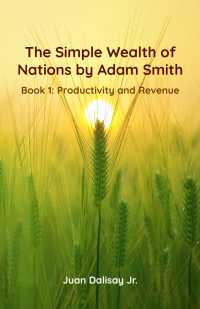Maximized Agriculture
January 15, 2023 5 minutes • 878 words
Table of contents
Aside from water, electricity and telecommunications, food is an essential minimum requirement for modern humans.
The Global Food Inflation Proves Market Liberalization is Flawed
The current economic system is unable to prevent hunger because it relies on market forces.
According to the doctrine of free markets, the inflation of food prices should attract capital to either food production or food distribution in order to create competition and reduce prices.
However, in reality, additional capital merely gravitates and pools around the monopolistic causes of the inflation – the big agribusinesses and big distributors, which we will call the ‘whales’.
The whales then probe the limits of the market and the government by playing with prices until they find a sustainable high price that is very advantageous to them, yet not extremely oppressive as to create a revolution or change in policy.
In the case of the Philippines, the whales chose to strike early at the start of the term of the new President who has a 6-year term, starting on June 30, 2022. In this way, they will have high revenues for 6 years unless the government is changed by a coup or revolution. Accordingly, the threat of a military destabilization cropped up after just 6 months in the second week of January 2023.
Solution: A New Agricultural Paradigm
To solve the problems caused by market forces in agriculture, we introduce a new paradigm called Maximized Agriculture which implements the principles of Agricultural Supereconomics.
What is Agricultural Supereconomics?
Agricultural Supereconomics applies the Four Laws of Supereconomics onto agriculture.
Moreover, it connects the following knowledge-groups:
- agriculture to human nutrition and plant/animal nutrition via Bio Superphysics
- agriculture to communities via Supersociology
- agriculture to chemistry via Material Superphysics
- agriculture to economics via Supereconomics
This is very different from Agriculture Economics which only deals with market prices and supply and demand of agricultural products
Principles of Maximized Agriculture
If Supereconomics is based on the 4 Laws of Value which represents the nature of energy flowing in terms of economic reality, then Maximized Agriculture is based on the 5 Layers or 5 Elements as they apply to agriculture.
| Layer | Example in Maximized Agriculture |
|---|---|
| Aethereal | The Nature of each crop, farmer, landlord, pests, etc. |
| Spacetime | The location and era or time period of the farm |
| Electromagnetism | The sun, lighting, and electric fields that are applied onto the farm |
| Convertible | The changes caused by the previous layers to the farm |
| Material | The chemicals and elements and other effects existing or produced in the farm |
Aethereal: Utility and Self-Reliance
The goal of the aethereal layer is for the farm to be useful to its users.
Spacetime: No Waste, Mixed Intercroping
The concept of maximization enters in this layer. This involves the maximization of the land as well as resources for farming. In this way, this layer facilitates the goals of the aethereal layer above it.
Included here is the physical location of the farm such as elevation, type of soil, etc. as well as the time of planting and the seasons.
Strategically, this manifests as mixed intercropping which is one of the main features of Maximized Farming.
Monocropping uses 1 type of crop as the main and only crop for a whole farm or plot of land. This is easy to set up, maintain, and harvest since the plants are all the same. You have one set of fertilizers, pesticides, and schedule for fertilizing, pruning, harvesting, etc.
The problem with monocropping is that a single pest, disease, typhoon, or drought can roll over the field and destroy the whole crop. Thus, this is similar to putting all the eggs in one basket.
Mixed cropping uses many crops as the main crops. Intercropping places the different crops together very near in the same plot. This is more difficult since each crop has different needs, different schedules.
The advantage is that pests, disease, typhoons, or doughts will not affect all plants. Some might die, but the rest will have natural resistances.
- A drought will kill plants that need water, but will not kill those that need little water
- A pest that infects one type of plant will need to cross over other types of plants to get to the other vulnerable plant to victimize.
In addition, the “cooperation” of plants, a new concept advanced by Maximized Farming, will help the farm have high yields and resistance without needing as much fertilizers or pesticides that monocropping needs. This is similar to a having a multicultural or multiracial organization where the members have a diverse set of useful skills that might be lacking in a organization with a single culture or race.
Electromagnetism: Light and Temperature
This includes the light and temperature which are really details of the previous spacetime layer.
Convertible: Growth and Evolution of the Farm
The interaction of the plants with the landlords, farmers, location, climate, etc then produce the changes in the plants which we see as growth. This layer is where farming techniques and tactics are implemented just as farming strategy and overall planning are done in the aethereal layer.
Material: Resources
The farming techniques will require material resources in order to create the growth or evolution that will match the goals set in the aethereal layer. This includes fertilizers, farming tools, pesticides, farming infrastruture, etc.






